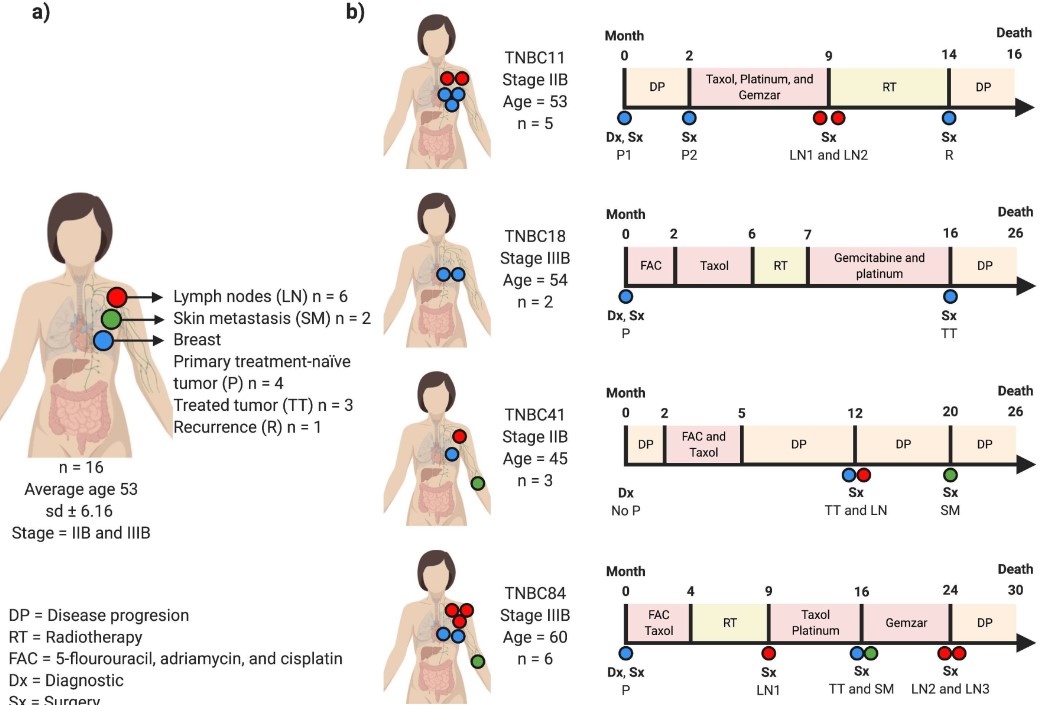BOURSESSENEGAL – Triple-negative breast cancer (TNBC) is a term often thrown around in discussions about breast cancer, but what does it mean when we talk about TNBC of the skin? This article will guide you through what TNBC of the skin is, its symptoms, risk factors, diagnosis, and treatment options. By the end, you’ll have a solid understanding of this condition and how to navigate it.
What is TNBC?
Triple-negative breast cancer (TNBC) is a subtype of breast cancer that lacks three common receptors: estrogen, progesterone, and the HER2 protein. Because of this lack, traditional hormone therapies and targeted treatments are often ineffective. However, when we discuss TNBC of the skin, we’re usually referring to the skin involvement of breast cancer, which may present unique challenges and considerations.
Understanding Skin Involvement in TNBC
What Does Skin Involvement Mean?
Skin involvement in TNBC occurs when cancer cells spread to the skin, either as a local recurrence after treatment or as part of metastatic disease. This means that the cancer is not just confined to the breast tissue but has extended beyond its original site. It may appear as lumps, lesions, or changes in skin texture.
Symptoms to Watch For
Recognizing the signs of skin involvement in TNBC can be crucial for early intervention. Here are some common symptoms to be aware of:
- Lumps or Masses: These may feel firm and can vary in size.
- Changes in Skin Color: Look for redness, discoloration, or the appearance of a rash.
- Skin Lesions: Any new lesions or sores that don’t heal could be a cause for concern.
- Itching or Pain: Unexplained itching or discomfort in the breast or surrounding areas should be evaluated by a healthcare professional.
Risk Factors
Understanding risk factors can help in monitoring your health. While TNBC can affect anyone, certain factors may increase your risk, including:
- Genetic Predisposition: Women with BRCA1 or BRCA2 gene mutations are at higher risk.
- Age: Women under 40 may have a greater likelihood of developing TNBC.
- Ethnicity: African American and Hispanic women tend to have higher rates of TNBC.
- Family History: A family history of breast cancer can be a significant risk factor.
Diagnosis of TNBC Involving the Skin
Initial Evaluation
If you notice any concerning symptoms, your healthcare provider will conduct a thorough evaluation. This typically involves a physical examination and a detailed medical history.
Imaging Tests
Imaging studies, such as mammograms or ultrasound, may be utilized to assess the extent of the disease. If there is a suspicion of skin involvement, a biopsy may be necessary to confirm the diagnosis.
Biopsy Procedures
A biopsy allows healthcare providers to obtain tissue samples for examination. There are several types of biopsies, including:
- Fine Needle Aspiration: A thin needle is used to extract cells from a lump.
- Core Needle Biopsy: A larger needle removes a small cylinder of tissue.
- Surgical Biopsy: In some cases, surgery may be necessary to obtain a larger tissue sample.
Treatment Options for TNBC of the Skin
Multidisciplinary Approach
The treatment for TNBC of the skin typically requires a comprehensive, multidisciplinary approach. Here are some common treatment options:
Surgery
In cases where cancer has spread to the skin, surgery may be necessary to remove affected tissue. This can help alleviate symptoms and may improve outcomes.
Radiation Therapy
Radiation therapy can target cancer cells and may be used to shrink tumors or treat skin lesions. It’s often utilized after surgery to eliminate any remaining cancer cells.
Chemotherapy
Chemotherapy remains a primary treatment option for TNBC. Since this cancer subtype is more aggressive, chemotherapy may be administered either before (neoadjuvant therapy) or after (adjuvant therapy) surgery.
Immunotherapy
Recent advances in immunotherapy offer new hope for TNBC patients. This treatment boosts the body’s immune response against cancer cells, potentially improving outcomes for those with skin involvement.
Supportive Care
In addition to direct cancer treatments, supportive care plays a vital role. This may include pain management, nutritional support, and psychological counseling.
Living with TNBC of the Skin
Emotional and Psychological Considerations
Receiving a diagnosis of TNBC can be overwhelming. Emotional support from family, friends, or support groups can make a significant difference.
Lifestyle Adjustments
Implementing lifestyle changes can also aid in managing the condition. Here are some helpful tips:
- Balanced Diet: Eating a nutritious diet can support your overall health.
- Regular Exercise: Staying active may improve your physical and mental well-being.
- Stress Management: Techniques such as yoga, meditation, or deep breathing can be beneficial.
Conclusion
Understanding TNBC of the skin is essential for anyone affected by this condition. With early detection and a comprehensive treatment approach, managing TNBC is possible. If you notice any symptoms or have concerns, don’t hesitate to consult your healthcare provider. Your health is worth it.
Key Takeaways
- TNBC of the skin refers to the skin involvement of triple-negative breast cancer, which can present unique challenges.
- Early detection through recognizing symptoms is crucial for effective treatment.
- A multidisciplinary approach to treatment enhances the chances of better outcomes.
By staying informed and proactive about your health, you can navigate the complexities of TNBC with greater confidence and resilience.
REFERENCE : https://en.wikipedia.org/



